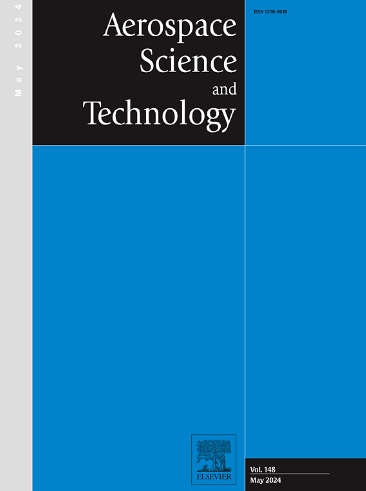在冲击隧道中利用多重测试策略同时获得平板上跨音速流的传热系数和绝热壁温
IF 5
1区 工程技术
Q1 ENGINEERING, AEROSPACE
引用次数: 0
摘要
本文章由计算机程序翻译,如有差异,请以英文原文为准。
Use of Multi-Test Strategy to Obtain Heat Transfer Coefficient and Adiabatic Wall Temperature Simultaneously in Shock Tunnel for Transonic Flow over a Flat Plate
Shock tunnel is a viable facility to produce high-temperature environment, but its heat transfer experimentation is in general challenged by the extremely short test duration (several milliseconds), and one particular problem is the determination of adiabatic wall temperature in such short time. Current technique of transient thermal measurement in shock tunnel (single-test method) prescribes adiabatic wall temperature to be a constant, which is calculated mostly from the analytical solution for high-speed boundary layer on a flat plate under several ideal assumptions, but fails to account for realistic effects in shock tunnel testing. To address this issue, this paper introduced a new method (multi-test strategy) to obtain adiabatic wall temperature and heat transfer coefficient simultaneously in shock tunnel, by linearly regressing data pairs of wall temperature and heat flux from runs with multiple initial wall temperatures. Transient thermal measurements were conducted at seven initial wall temperatures of the flat plate, over which a transonic flow is established in shock tunnel. Wall temperature history is recorded by coaxial thermocouple during each test, from which heat flux is reconstructed. Data pairs of wall temperature and heat flux from runs with all the seven initial wall temperatures are used in multi-test strategy, while those from the run at only one initial wall temperature are employed in single-test method. It is found that the streamwise distribution of heat transfer coefficient is qualitatively different between the two methods, due to the distinct principle to determine adiabatic wall temperature. Quantitatively, heat transfer coefficient from multi-test strategy is generally higher than that from single-test method owing to the lower adiabatic wall temperature than the prescribed value. A correction to multi-test strategy is proposed to align the heat transfer coefficient and adiabatic wall temperature more closely with the results from single-test method.
求助全文
通过发布文献求助,成功后即可免费获取论文全文。
去求助
来源期刊

Aerospace Science and Technology
工程技术-工程:宇航
CiteScore
10.30
自引率
28.60%
发文量
654
审稿时长
54 days
期刊介绍:
Aerospace Science and Technology publishes articles of outstanding scientific quality. Each article is reviewed by two referees. The journal welcomes papers from a wide range of countries. This journal publishes original papers, review articles and short communications related to all fields of aerospace research, fundamental and applied, potential applications of which are clearly related to:
• The design and the manufacture of aircraft, helicopters, missiles, launchers and satellites
• The control of their environment
• The study of various systems they are involved in, as supports or as targets.
Authors are invited to submit papers on new advances in the following topics to aerospace applications:
• Fluid dynamics
• Energetics and propulsion
• Materials and structures
• Flight mechanics
• Navigation, guidance and control
• Acoustics
• Optics
• Electromagnetism and radar
• Signal and image processing
• Information processing
• Data fusion
• Decision aid
• Human behaviour
• Robotics and intelligent systems
• Complex system engineering.
Etc.
 求助内容:
求助内容: 应助结果提醒方式:
应助结果提醒方式:


